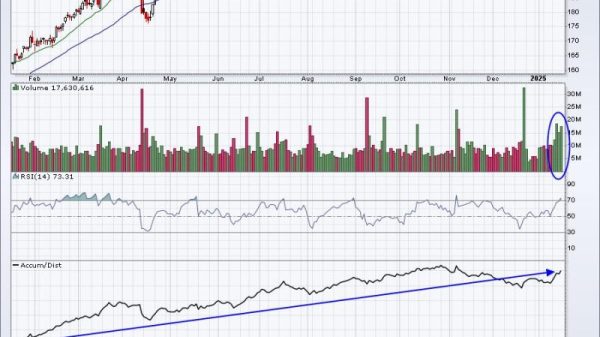Japan’s “Moon Sniper” lander has defied the odds for a third time, surviving yet another long, frigid lunar night despite not being designed to endure such harsh conditions, according to the Japan Aerospace Exploration Agency.
Temperatures during the lunar night can plunge to minus 208 degrees Fahrenheit (minus 133 degrees Celsius), according to NASA. And Moon Sniper wasn’t expected to withstand even one lunar night, which is a period of darkness on the moon lasting about two weeks.
The robotic vehicle, also known as SLIM, or the Smart Lander for Investigating Moon, initially touched down on the lunar surface on January 19. The historic feat made Japan the third country this century, and the fifth ever, to land on the moon. The spacecraft touched down near the Shioli Crater, located about 200 miles (322 kilometers) south of the Sea of Tranquility, a region near the lunar equator, where Apollo 11 first landed humans on the moon.
But things didn’t quite go according to plan.
During descent, the spacecraft experienced an anomaly and landed on its nose, which meant its solar panels were facing west rather than upright and not receiving necessary sunlight to generate power. The lander had just enough energy to send back a mosaic of images before shutting down. The mission’s team in Japan remained hopeful that once sunlight could reach the solar panels again, the spacecraft might reawaken.
So far, Moon Sniper, which gained its nickname for the precision technology that allowed it to land about 55 meters (180 feet) from its target, keeps pleasantly surprising the team by waking up after each lunar night, taking new photos and transmitting them back before it goes back to sleep. The vehicle’s resilience in the face of lunar extremes is unique among missions that have landed on the moon in the past year, and experts have a couple ideas as to why that might be.
Riding out the lunar night
The mission team communicated with Moon Sniper on April 23 after the lander rode out its third lunar night. The spacecraft was able to transmit more images of its landing site.
“SLIM has maintained main functionality even after 3 nights on the Moon, which was not anticipated in the design!” the team shared on X, formerly known as Twitter.
In addition to surviving the extreme cold of the lunar night, Moon Sniper has also endured the searing temperatures of the lunar day, which can reach 250 degrees Fahrenheit (121 degrees Celsius), according to NASA.
The team shared that it’s closely monitoring SLIM’s condition in order to identify what components of the spacecraft could deteriorate over time as it experiences more of the lunar day and night environment.
JAXA engineers have been careful about how they communicate with SLIM when it first wakes up since the spacecraft is operating in such high temperatures, which could heat up the cameras and damage them. As a result, the mission team usually waits about a day after SLIM wakes up before commanding it to send back images.
So far, one of SLIM’s navigation cameras and the spacecraft’s Star Tracker have provided images from Moon Sniper’s experience on the lunar surface. The Star Tracker isn’t a true camera and instead was used to measure the direction of the spacecraft by tracking the alignment of the stars as the lander traveled to the moon. But the team has taken clever measures to make the most of Moon Sniper’s wonky landing.
“It was not originally planned to be used on the lunar surface, but in principle it can take pictures just like a camera, which led to its operation through ‘secret commands,’” the agency shared on X.
The spacecraft has two navigation cameras mounted in different directions. Given how Moon Sniper landed, one of those cameras is facing into space, but the other has a view of the landing site from the spacecraft’s perspective.
The sun has once again set near Shioli Crater, and Moon Sniper went into hibernation again on April 29, according to the agency.
“We plan to attempt to resume operation again in mid to late May, when SLIM’s solar cells start generating electricity. We appreciate your continued support,” the agency shared on X as Moon Sniper went to sleep once more.
Members of the mission team recently composed a song in honor of Moon Sniper’s inspiring journey that they call “15 Degree Slope.” The song encompasses every step of the surprising mission, from launching and traveling to the moon to the unexpected landing and “the awakening of resurrection,” team members shared on X.
The song borrows its name from the steep slope where Moon Sniper was intended to land. Now, the mission team believes the slope Moon Sniper landed on was about 10 degrees, which is still “surprisingly steep.”
A tale of two moon landings
In February, Houston-based space exploration company Intuitive Machines landed its uncrewed IM-1 mission, also known as Odysseus, at the lunar south pole, making it the first commercial spacecraft ever to soft-land on the moon and the first US-made vehicle to reach the lunar surface since Apollo 17 in 1972. But like SLIM, the “Odie” mission experienced a bit of a lunar rollercoaster ride that included having to rely on experimental technology to touch down and ultimately landing on its side.
On February 29, after seven days of operating, Odie went to sleep because it wasn’t intended to survive the lunar night. The Intuitive Machines team listened out in case Odie awakened in March, but the spacecraft never phoned home again.
“Odie was designed to only support his payloads, none of which were capable of lunar night, so we did not design him for more,” said Jack Fischer, former NASA astronaut and vice president of production and operations at Intuitive Machines. “There are measures we could have taken to allow for potentially lasting longer, but we were focused on economical, rapidly flown support of our payloads, as opposed to a nation-state sponsored mission.”
The fact that Odie landed near the moon’s south pole, while SLIM touched down near the equator, could affect survivability of the lunar night, Fischer said.
“It still depends on terrain, but the equator will generally have less issues with shadows and have more productive solar power generation (due to higher incidence angles) than Odie experienced at the South Pole,” he said.
Other factors that could increase survivability include keeping a chemical battery protected and working through extreme temperatures and a design that can feed solar power directly to the power system, both of which could be implemented in the future.
“Surviving the night is critical for any effort to build meaningful infrastructure on the Moon, and IM is working on a host of options with experiments as soon as our IM-3 mission,” Fischer said. “Our goal is to first ‘survive’ the night where the spacecraft goes into a sort of hibernation (like SLIM has done) and wakes up on the other side. Ultimately, we want to ‘thrive’ through the night, and are doing just that with our Lunar Terrain Vehicle program, where the vehicle can do meaningful work through the lunar night.”
Fischer offered a tip of his cap to JAXA on the continued success of its mission.
“While I’m not an expert on the design of their vehicle, it is quite a feat for their spacecraft to have survived three lunar nights, no matter the circumstances,” Fischer said.
A race to the moon
Japan’s success with Moon Sniper is just one entry into a renewed race to land on the moon that has played out over the past few years.
India became the fourth country to land a robotic mission on the moon in August 2023 when the Chandrayaan-3 mission touched down near the lunar south pole. The Vikram lander and the Pragyan six-wheeled rover it deployed studied the moon for nearly two weeks before shutting down to sleep through the lunar night — but attempts to reawaken them were unsuccessful.
And the push for lunar exploration continues as China seeks to land a sample-collecting mission on the moon’s far side, or the side facing away from Earth, and NASA aims to establish a sustained human presence at the lunar south pole through its ambitious Artemis program.
The continued success of Moon Sniper comes during what Noah Petro, NASA project scientist for both the Lunar Reconnaissance Orbiter and Artemis III, calls a “great new era of lunar exploration.”
Six of the groundbreaking Apollo missions returned lunar samples from different landing sites on the moon, but all of them were on the near side of the moon. Exploring new lunar regions provides new windows into understanding Earth’s satellite.
“For me, there is great joy in seeing missions land on the lunar surface,” Petro said. “Every time we land on the surface, we learn more about this unique lunar environment that we’re getting ourselves into. Building up this database of lunar knowledge of what it means to be and work on the surface of the moon helps us be better prepared for the Artemis missions.”


































